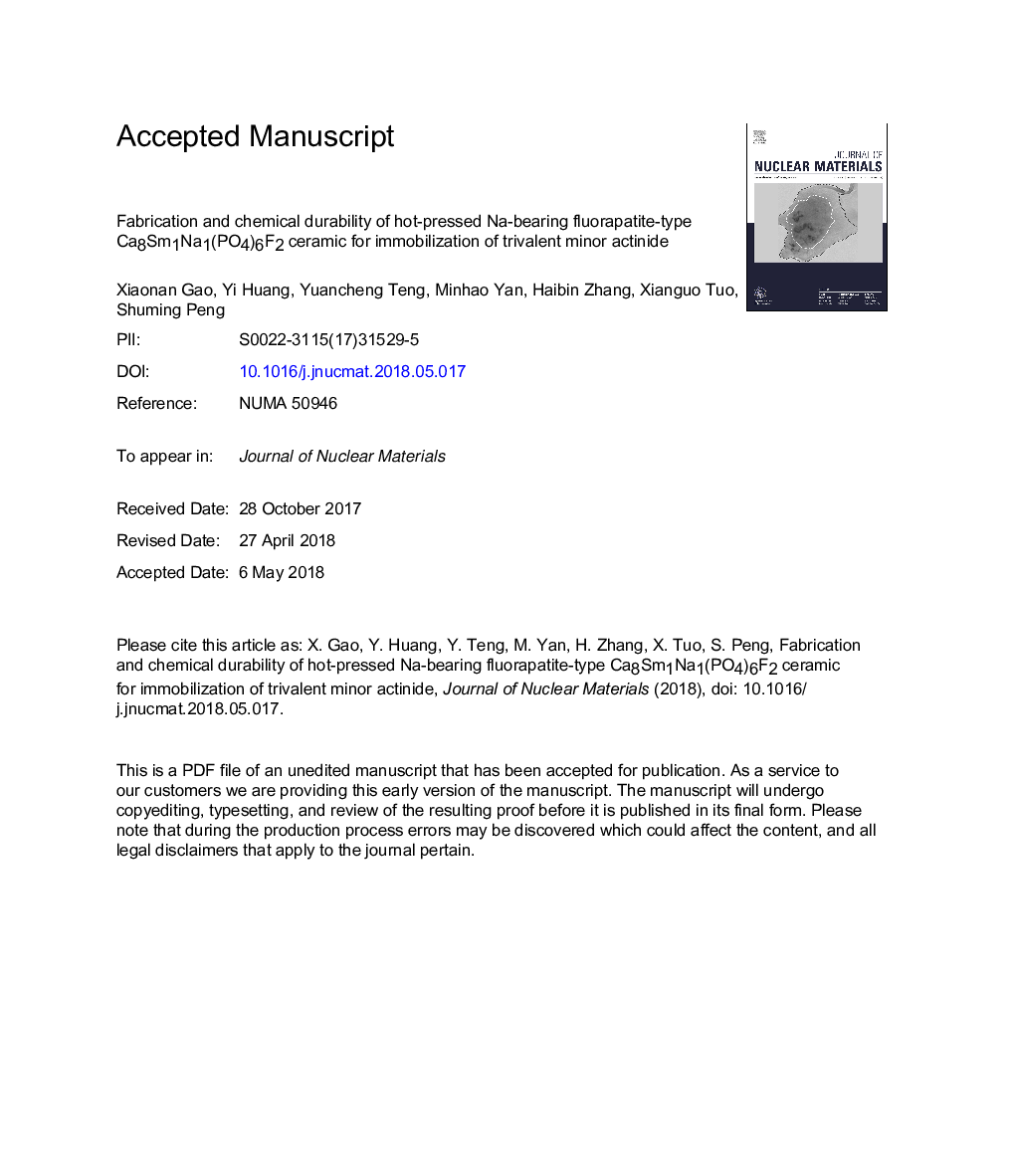| Article ID | Journal | Published Year | Pages | File Type |
|---|---|---|---|---|
| 7963144 | Journal of Nuclear Materials | 2018 | 37 Pages |
Abstract
The fluorapatite-type Ca8Sm1Na1(PO4)6F2 ceramic was successfully fabricated by hot uniaxial pressing (HUP) sintering process. The effects of sintering temperature and holding time on the relative density and Vickers hardness of the ceramic were investigated. The surface microstructure, weight loss rate and surface composition of Ca8Sm1Na1(PO4)6F2 ceramic before and after the leaching experiment were examined. The influences of leaching temperature and pH value on the chemical durability of the ceramic were also studied. The results showed that the ceramic sintered by HUP at 1100â¯Â°C for 2â¯h obtained the highest relative density (99.46%) and maximum Vickers hardness (3.704â¯GPa). The largest weight loss rate (0.578%) and the highest normalized elemental leaching rates of Sm, Ca, P, Na and F were obtained in the media (pHâ¯=â¯3) at 90â¯Â°C. The surface of ceramic in the media (pHâ¯=â¯3) appeared obvious corrosion with plenty of intergranular and intragranular pores. The small weight loss rates (0.003%-0.008%) and the low normalized elemental leaching rates of Ca (7.44â¯Ãâ¯10â3â¯gâ¯m-2â¯d-1 - 8.22â¯Ãâ¯10â4â¯gâ¯m-2â¯d-1) and Sm (9.11â¯Ãâ¯10â6â¯gâ¯m-2â¯d-1 - 1.07â¯Ãâ¯10â6â¯gâ¯m-2â¯d-1) were acquired in the media (pHâ¯=â¯7, 9 and 11), indicating that the Ca8Sm1Na1(PO4)6F2 ceramic possessed high chemical durability in the neutral and alkaline media at 90â¯Â°C.
Related Topics
Physical Sciences and Engineering
Energy
Nuclear Energy and Engineering
Authors
Xiaonan Gao, Yi Huang, Yuancheng Teng, Minhao Yan, Haibin Zhang, Xianguo Tuo, Shuming Peng,
